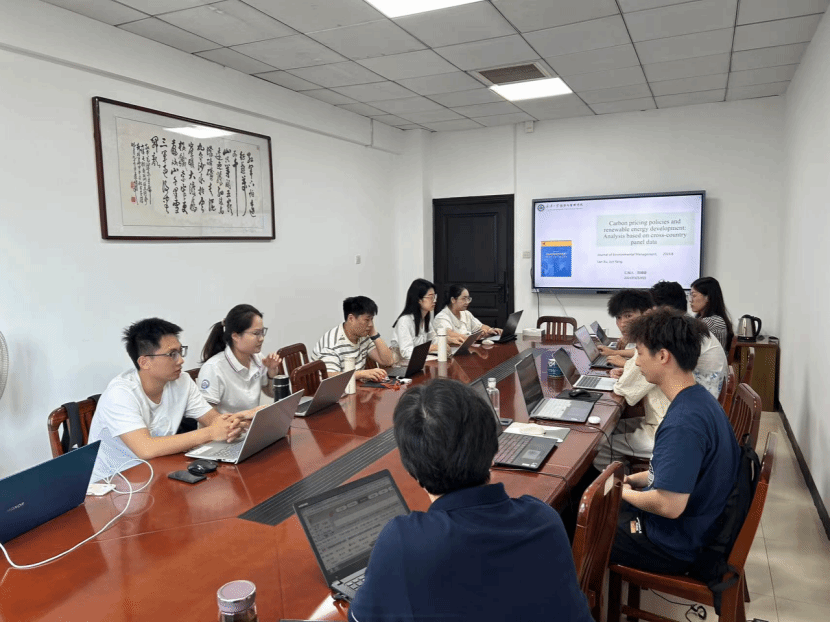时间:2024年9月28日(周六)9:00
地点:气候变化与能源经济研究中心会议室
Paper1:周婧婕 Carbon pricing policies and renewable energy development: Analysis based on cross-country panel data
摘要:While studies have theoretically discussed the impact of carbon pricing on renewable energy, the practical implementation and effectiveness of these policies remain uncertain. This study empirically examines the role of carbon emissions trading and carbon tax in global renewable energy development using panel data from 196 countries and regions and employing the staggered difference-in-differences (DID) model and Bacon decompo�sition method. The results suggest that: (1) From the perspective of policy shocks, carbon trading has increased non-hydro renewable electricity generation by 73.32%, while carbon tax has increased it by 31.79%. This in�dicates that the overall impact of carbon trading on renewable energy is greater than that of carbon tax.However, the elasticity coefficients of renewable energy to carbon trading prices and carbon tax rates are 0.1801 and 0.1845, respectively, suggesting a slightly greater marginal effect of carbon tax on renewable energy compared to carbon trading. (2) Both carbon tax and carbon trading have mitigated the growth of fossil elec�tricity and encouraged public investment in renewable energy, thereby fostering its development. (3) The in�fluence of carbon pricing on renewable energy varies by income level; notably, the implementation of these policies in high-income countries has diminished their promotional effect on renewable energy. (4) The contribution of technological innovation to renewable energy development is smaller than that of policies including carbon trading and carbon tax, indicating that renewable energy development during the sample period was predominantly driven by policy measures. The findings indicate that the application of carbon pricing policies should be further promoted to accelerate the energy mix transition.
Paper2:申至立 低碳转型风险的“涟漪效应”
摘要:“双碳"目标背景下,有效识别并量化金融市场内的低碳转型风险,对于维护国家经济低碳转型过程中的经济金融安全以及防范系统性金融风险具有重要的现实意义。本文提出属性分类建模法,将上市公司的碳排放、贝塔系数、市值、市净率等属性特征与前沿张量自回归模型相结合,构建基于多维度属性风险关联指数和关联网络的风险传导效应分析框架,用以刻画低碳转型风险在属性结构中的“涟渐效应”。结果显示:多维属性视角下,中国股票市场中的“涟漪效应"体现为具有相似属性特征的上市公司之间的风险关联效应;低碳转型风险的“涟漪效应”传导中心位于“高碳排、低市净率、高市值、低贝塔”类别。随着风险逐步沿属性特征向外扩散,风险关联强度逐渐减小;中国提出“双碳”目标后,各层涟漪的风险关联强度均呈现显著上升趋势;高碳排属性是低碳转型风险“涟漪效应”的主要驱动属性,但在“双碳”目标约束下,其驱动作用向低市净率、高市值属性转移,转型风险呈现出跨属性传导的特征。本文为碳中和背景下完善适应于低碳转型风险的宏观审慎政策框架、构建低碳转型风险防治体系提供了理论依据。
